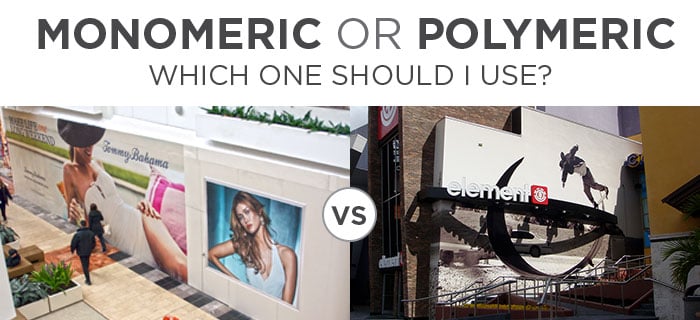Are you unsure of what type of calendered film to use for different types of projects? Have you ever asked yourself, “which film should I use, monomeric or polymeric?”
If you’ve ever asked yourself this question, keep reading. By the end of this article you will have a clear understanding of calendered film. Additionally, you will also know when to use each type.
The Calendering Process
We make calendered films through a “melt” process. First, we melt PVC (Poly-Vinyl-Chloride) resin, plasticizer and colorant together. As they cool, we roll the molten PVC through calendering rollers. This creates the final width, thickness, and surface finish of the film. Finally, we wind up the calendered film for further processing.
Let’s Talk About Plasticizer
A plasticizer is a substance added to a synthetic resin. Basically, plasticizer promotes plasticity and flexibility, reducing brittleness. So without plasticizers, PVC products are hard and brittle. They would shatter if you tried to bend, squeeze, or flex them, even a little! From the earliest days of using PVC as a commercial material, it has been mixed with a wide range of additives. These additives change durability, color, opacity, and flexibility.
Of course, the biggest concern with plasticizers is migration. To reduce this, we purchase top shelf plasticizer that is migration resistant. Plasticizer that stays in its original product prevents all manner of film problems. This includes cracking and splitting, poor adhesion of ink or glue, and incompatibility with the screen or digital printing process. So, the longer plasticizer remains in your product, the longer your product will last.
What do Monomeric and Polymeric mean?
Now that we understand plasticizers, we can tell a lot by the names given to the two types of calendered film. To summarize, “Mono-” means one, “poly-” means many and “-meric” means body or unit. Monomeric and Polymeric describe the type of plasticizer used to create a flexible finished vinyl.
The Real Differences between the Two Types of Film
Monomeric Film
Monomeric films are made of short-chain plasticizers. These short chains do not bind into film very well. Overall, the short-chain plasticizers tend to migrate out of the film, making it brittle. Additionally, monomeric film varies in thickness. It can be between 3 – 4 Mils (70 to 80 micron) thick and has a tendency to shrink. Therefore, these films are best for indoor flat applications and have a 3 – 5 year outdoor durability. Lastly, monomeric films have a short-term outdoor durability that varies by manufacturer, making them more economical.

Polymeric Film
Polymeric films are made of long-chain plasticizers that bind well into the film. Above all, this bond prevents the plasticizers from migrating. Generally, polymeric film feels softer and varies in thickness. Polymeric film can be 2.5 – 3.5 Mils (60 – 80 microns) thick, is more stable, and is less likely to shrink. For this reason, polymeric film is best for both indoor and outdoor applications including mild curves. Also, polymeric film usually has a medium-term outdoor durability of 5 – 7 years, which is longer than monomeric film.

The next time you ask yourself what type of calendered film should you use, remember this:
| Monomeric Film: | Polymeric Film: |
|
|
Now, could you casually drop the term “monomeric plasticizer migration” during your next cocktail party?
To learn more about the difference between cast and calendered film, read our Cast Vs Calendered blog post!




